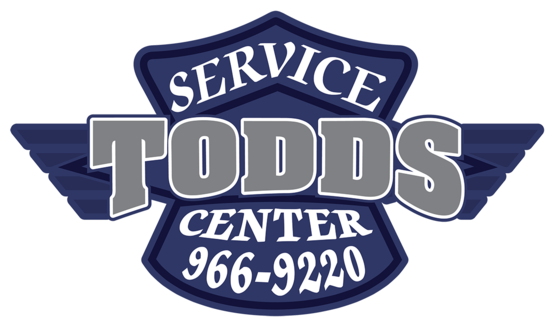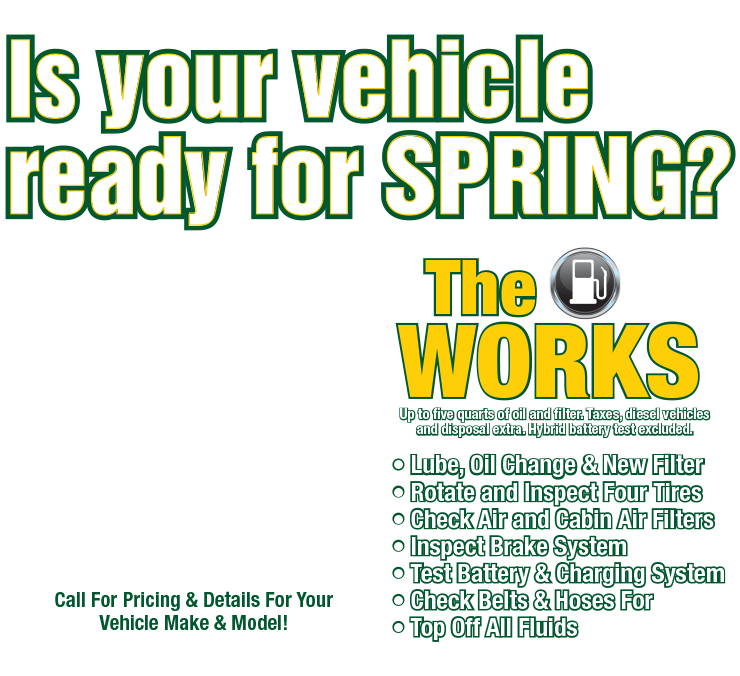This page provides answers to some of the most frequently asked questions about vehicle repair and service. We've thrown in some of our favorite tips and recommendations, too. Please call us or consult our Contact Us page for answers to your specific questions. We are happy to assist you!
Tires
-
Should I rotate my tires?
The main purpose of regularly rotating tires is to achieve more uniform wear for all tires on the vehicle. It is recommended that you rotate your tires at least every 6,000 to 8,000 miles or uneven wear may develop. At strongly tire-oriented facilities this is a service typically done at no additional cost; along with free flat repairs, Nitrogen inflation, and an undercar inspection.
-
How important is wheel alignment?
It is very important! Having your wheels aligned helps in prolonging the life of your tires. Research indicates that the average car is driven about 12,000 miles per year. A car with toe alignment just 0.34 degrees (Just 0.17 inches) out of specification has dragged its tires sideways.
-
Can I drive normally on my spare tire?
Many newer vehicles come equipped with a temporary spare, sometimes called a "donut". These tires are usually much smaller than the other tires on your car. It is important to realize that these spares have far more limitations than a typical tire, including speed and recommended driving distance. No more than 50mph and drive no further than 50 miles on the "donut" temporary spare.
Vehicle Maintenance
-
I have 100,000 mile spark plugs in my car. When will I need a tune-up?
In the traditional sense there is no such thing as a tune-up anymore. Carburetors and distributors with their myriad of parts destined to failure have been replaced with electronic injectors and electronic ignition systems. There is virtually little to wear out.
Aging Ignition wires and spark plugs may continue to function for 100,000 miles but not optimally. The car manufacturer’s boastful claim of 100,000 between tune-ups has little grounding in common sense, and is mostly a marketing ploy. At the price of gasoline these days even a three percent decrease in fuel efficiency is expensive, not to mention ecologically unfriendly. A fresh set of spark plugs any time over 50,000 miles will normally make a noticeable difference.
-
What does it mean if my "check engine" or "service engine soon" light comes on?
There are many sensors and computerized components that manage your vehicle’s engine performance and emissions. When one of these fails, the "check engine" light is illuminated. Although your car may seem to run fine, it is important to have the issue addressed to prevent long-term problems.
-
With the change of the season and the temperatures, do I need to have my car checked?
It is a good idea to have your coolant checked to determine its freezing and boiling points to verify whether it needs to be changed. Have your air conditioner tested before the summer heats up, it is cheaper to fix before the season gets started.
Oil Change
-
When should I get my oil changed?
You should get your oil changed every 3000 miles or as recommended in your vehicle’s owner’s manual.
-
What is that milky brown engine oil?
Milky brown engine oil is an indication of coolant in the oil. This can be caused by a blown head gasket (other gasket), a failed transmission cooler, or cracked casings. This condition is very serious and needs to be checked by a professional technician quickly.
-
What is synthetic motor oil?
Synthetic motor oils can be a good choice for high output, turbocharged or supercharged engines, vehicles that are used for towing (especially during hot weather), or vehicles that are operated in extremely cold or hot climates.
Synthetic motor oils, though several times more expensive than mineral-based motor oils, can improve fuel economy and provide longer intervals between changes. They also provide instant lubrication on start-up.
Troubleshooting
Electrical System
Fuel System
Cabin Air Filters
-
What is a Cabin Air Filter?
Cabin air filters filter the air that comes from the outside of a vehicle into the passenger compartment. They were originally designed to remove solid contaminants like dust and soot from circulating inside the vehicle. These filters can now also absorb gases and odors. Cabin air filters may also be known as passenger compartment filters, pollen filters, or dust filters.
-
How often should they be replaced?
Vehicle manufacturer recommendations may vary, but the general guideline for replacing cabin air filters is every 12,000 to 15,000 miles, or at least once a year.
-
What happens if they are not replaced at the recommended interval?
In addition to the possibility of unpleasant odors, filters that have been left in service for over 20,000 miles can result in decreased heating and air conditioning performance caused by restricted air flow through the cabin air filter.
Auto Glass
-
When I need a repair, who do I contact first: my insurance agent or the Auto Glass repair facility?
Call us first. We are experienced in working directly with insurance companies. Our experts will verify your coverage, file the claim and handle all the necessary paperwork.
-
What's the difference between my windshield and the other glass in my car?
Auto glass manufacturing has evolved over the past hundred years to incorporate important safety features. Windshields are made of “Laminated Glass” not ordinary window glass. This are formed from two pieces of glass with a layer of vinyl in between. This helps the windshield stay intact in the event of a collision. The side and rear windows are usually made of tempered glass, which has been treated to make it much stronger than other glass of the same thickness. If it breaks, it should shatter into small pieces rather than shards. In recent years, vehicle manufacturers have started using laminated windshield-type glass for side windows in some vehicles








